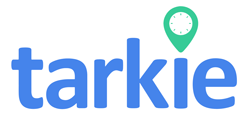Ever thought about how much absence costs your business? Small and medium enterprises (SMEs) in the Philippines face tough market challenges. Attendance analytics is a key tool to find and fix hidden productivity gaps. It helps track employee attendance, improving workforce management and making strategic decisions.
This article shows how knowing attendance patterns can change your strategic planning. It helps reduce the effects of absenteeism, leading to more engaged employees and a better bottom line.
Key Takeaways
- Attendance analytics can significantly reduce payroll mistakes and absenteeism.
- Real-time insights help align employee roles, increasing job satisfaction.
- Data-driven decision making enhances strategic planning efficacy.
- Understanding absenteeism leads to improved employee morale and trust.
- Effective attendance tracking can identify productivity gaps for better resource allocation.
Understanding Attendance Analytics
Attendance analytics is about collecting and analyzing data on how often employees show up. It helps find out how productive and engaged they are. This is key for improving how well a team works together, which is very important for small and medium-sized businesses.
Definition and Importance
Using attendance analytics helps track when employees are absent or late. Good attendance is not just about numbers. It affects how well a team works together and how happy everyone is.
This makes it crucial to have systems that track attendance well. It helps keep a team motivated and working together better.
How It Works
Attendance analytics uses important measures like how efficient employees are and how often they leave. It helps companies see how well their team is doing. By using this data, companies can make smart choices to improve how well they work.
For example, a retail store used analytics to find out who was likely to leave. They then came up with plans to keep those employees. Another company, a software developer, adjusted their team size during busy times. This helped them work more efficiently.

The Link Between Attendance and Productivity Gaps
It’s key for companies to understand how absenteeism affects productivity. High absenteeism rates can harm productivity in many areas. When people miss work often, tasks pile up, making it harder for those who are there.
This can slow down work and lower employee morale. It’s important for bosses to see this link to boost performance.
Impact of Absenteeism on Productivity
Studies show that absenteeism directly lowers productivity. Companies with lots of absent employees often have to pay for overtime and temporary workers. This can lead to more stress and lower productivity for those who are there.
It’s crucial to track how often employees are absent. This helps find out why they’re missing work so much.
Quantifying the Cost
Being absent can cost a lot for companies. They might spend about 97,000 pesos per employee each year because of it. These costs add up, making it important for companies to use tools to track attendance.
Knowing the cost of absenteeism helps with budgeting. It also helps come up with plans to reduce absenteeism.

Benefits of Attendance Analytics for Strategic Planning
Attendance analytics gives SMEs valuable insights for better strategic planning. It helps them make decisions based on data, not just guesses. This way, they can tackle challenges and boost productivity.
Data-Driven Decision Making
Attendance analytics lets SMEs make choices based on real data, not just feelings. By looking at attendance data, they can spot where most people are absent. This helps them fix problems, use resources wisely, and make employees happier.
Companies that use attendance analytics can spot problems quickly. This leads to better work environments and happier teams.
Spotting Trends and Patterns
By watching attendance trends closely, businesses can avoid productivity drops. Patterns in attendance show a lot about how engaged employees are and if they’re leaving. For example, losing employees can cost a lot, up to 33% of their salary.
By seeing these patterns, companies can hire better and keep teams stable. This leads to a more productive and loyal workforce.

| Benefit | Impact |
|---|---|
| Faster issue identification | Up to 30% improvement in problem resolution |
| Reduced hiring costs | Potential training cost reduction of 25% |
| Improved employee retention | 20% increase in retention rates |
| Enhanced communication | 30% increase in efficiency |
| Higher productivity | 12% increase from tracking employee satisfaction |
Case Studies: Success Stories from SMEs in the Philippines
Philippine SMEs are key to the national economy, making up 99.3% of all businesses. Many have seen success by using attendance analytics systems. For example, a food processing company saw a 25% boost in productivity and better team work with automated tracking.
A footwear and leather maker also cut down on absences. This move improved efficiency and boosted employee morale. The Philippine MSME Development Plan highlights MSEs’ role in providing jobs for many Filipinos. By using attendance analytics, these businesses have become more efficient and accountable.
Attendance analytics help SMEs understand their employees better. This leads to smarter decisions that help them grow. Reports show it can also increase upgrading rates, a big challenge for SMEs worldwide. These stories show how attendance tracking solutions improve workplaces and boost the economy.

Tools for Effective Attendance Tracking
In today’s fast-paced business world, the right attendance tracking tools are key to boosting productivity. Small and medium enterprises (SMEs) can now manage attendance better with modern solutions. Tools like EmpMonitor, Xero, and Payroll Hero offer features that help track employee attendance accurately and streamline payroll.
Modern Solutions
Many attendance tracking tools come with unique features for different business needs. Cloud-based platforms make it easier to manage both remote and office workers. They track when employees log in and out, analyze their attendance patterns, and provide real-time data.
This data helps with payroll and lets managers understand and address absenteeism. It’s a big step towards improving attendance and reducing lost productivity.
Benefits of Automation
Automation is crucial for making payroll and attendance management more efficient. It automates reminders for employees, flags unusual absences, and creates detailed reports. For example, it helps document absenteeism, showing how it affects team dynamics and productivity.
Regular check-ins or feedback with employees can also boost their commitment to good attendance. Tools that support these interactions create a positive work environment. By choosing the right tools, businesses can improve morale and keep productivity high. For more on using these technologies, check out this link on integrating timekeeping software with payroll systems.
Addressing Employee Morale through Attendance Insights
Using attendance insights can really help improve how employees feel at work. By looking at who’s absent and why, companies can find out what’s causing it. For example, health problems and family needs are big reasons for missing work.
By tackling these issues, businesses can make their workplaces better. This can lead to happier and more productive employees.
One good idea is to offer flexible work hours. This can help about 10% of employees who struggle with their schedules. Also, a supportive work environment can cut down on absences by 25%.
Getting employees involved in their work can make them show up more often. When employees are happy, they tend to miss work less, with rates below 10%.
Starting recognition programs can make employees feel valued and seen. This can lead to a 15% increase in who shows up for work. Even small rewards, like bonuses for good attendance, can make a big difference, boosting attendance by up to 30%.
Using modern systems to track attendance can make employees happier. These systems are accurate and cut down on mistakes by 50%.
Investing in programs that help employees can improve attendance by 25%. Regularly checking and updating attendance policies helps everyone understand what’s expected. This creates a positive work environment that boosts morale and productivity.
How to Implement Attendance Tracking in Your Organization
Starting an attendance tracking system in your company needs careful planning. A well-structured plan can help solve common problems and find good solutions. Knowing the key steps helps improve how you manage attendance and boosts productivity.
Steps for Implementation
First, pick the right attendance tracking software for your company. Many businesses use location-based apps with geofencing to increase accountability. These apps can lead to a 35% boost in this area.
Next, train your staff well so they know how to use the new system. Tools like Workstatus offer GPS tracking and selfie validation to improve accuracy and productivity. Regularly reviewing attendance data can also help refine your processes.
Challenges and Solutions
Setting up an attendance tracking system can face several challenges. Manual methods often lead to mistakes that impact employee pay and work quality. These errors can waste up to 5 hours of management time each week, or 260 hours a year.
To solve these problems, use automated systems that keep attendance records digitally. This cuts down on paperwork. Geofencing helps avoid buddy punching and lets managers check attendance in real-time. It makes attendance tracking more effective by setting clear goals and alerts.
Analyzing Attendance Data for Continuous Improvement
Looking at attendance data is key for schools to get better. It helps find areas that need work. For example, if many students miss a lot of school, schools can start helping them sooner.
About 15% of students miss 10% to 19% of school, and 5% miss 20% or more. This means schools need to help these students more.
Tracking attendance every day helps find students who miss a lot of school. Using both school work and other help works best. Sending reminders can also help students and their families.
Having friends help each other can also improve attendance. Schools should celebrate when students show up more often. This makes everyone feel good about coming to school.
By looking at attendance data, schools can make better choices. This helps students learn more and feel more involved in school.
Conclusion
Attendance analytics is key for spotting productivity gaps and helping in strategic planning for businesses in the Philippines. It lets companies use attendance data to make smart choices. This leads to better efficiency and a more optimized workforce.
By using attendance data, businesses can cut down on absences by up to 25% and boost productivity by 20%. This also helps create a culture of responsibility among teams.
Also, good attendance tracking cuts down payroll mistakes by about 30% and boosts labor law compliance by 40%. These benefits lead to big savings on labor costs and overtime. This makes the business more efficient overall.
As shown in this article, using attendance analytics can change a company’s workforce for the better. It leads to higher employee retention and less absenteeism.
In the end, adding attendance tracking to strategic plans helps businesses succeed in a tough market. Switching to advanced attendance management systems opens up chances for ongoing improvement. This shows how crucial these insights are for lasting success in today’s fast-changing market.
